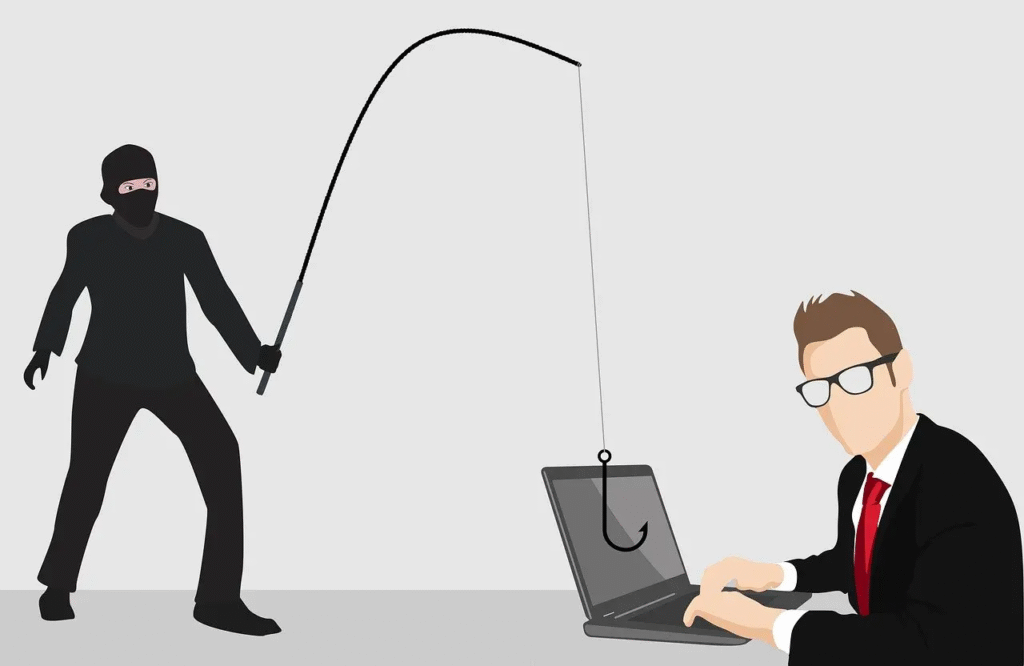
Status: Final Blueprint (Summary)
Author: Shahab Al Yamin Chawdhury
Organization: Principal Architect & Consultant Group
Research Date: February 6, 2024
Location: Dhaka, Bangladesh
Version: 1.0
1. Executive Summary
Phishing has evolved from a nuisance into a primary and financially devastating threat for Small and Medium-sized Businesses (SMBs). Attackers, leveraging advanced AI and “Phishing-as-a-Service” models, now specifically target SMBs for their valuable data and perceived weaker security. A single successful attack can lead to catastrophic financial loss and business failure. This blueprint provides a condensed, actionable framework for SMBs to implement a multi-layered defense, build resilience, and protect their future.
2. The Threat & The Risk
Why SMBs are Prime Targets
Attackers view SMBs as “soft targets” due to a combination of factors:
- Resource Constraints: Limited budgets and a lack of dedicated cybersecurity staff.
- Valuable Data: Possession of customer PII, financial records, and intellectual property.
- Supply Chain Vector: SMBs are often used as a gateway to attack larger, partnered enterprises.
Key Phishing Vectors
- Business Email Compromise (BEC): Attackers impersonate executives or vendors to trick employees into making fraudulent wire transfers. This is the most financially damaging threat.
- Credential Harvesting: Using fake login pages to steal usernames and passwords for critical systems.
- Ransomware Delivery: Malicious software delivered via email that encrypts files and holds them for ransom.
The Financial Impact: By the Numbers
- $2.9 Billion: Lost to BEC attacks in 2023 alone (FBI IC3).
- $137,132: The average loss per BEC incident, up 83% since 2019.
- $4.72 Million: The average cost of a data breach that originates from a phishing email.
- 60%: of small businesses fail within six months of a major cyberattack.
3. The Multi-Layered Defense Framework
Effective protection requires a defense-in-depth strategy integrating people, technology, and policy.
Layer 1: The Human Firewall
Transform employees into your first line of defense.
- Continuous Security Training: Go beyond a one-time event. Train employees to recognize the psychological triggers of phishing (urgency, fear) and to inspect links and sender details carefully.
- Phishing Simulations: Regularly test employees with simulated phishing emails to reinforce training and measure progress. Focus on improving the reporting rate, not just the click rate.
Layer 2: Technical Controls
Implement a robust technology stack to block and contain threats.
- Mandatory Multi-Factor Authentication (MFA): The single most effective control. Enforce phishing-resistant MFA (authenticator apps, hardware keys) on all critical systems, especially email.
- Email Authentication (SPF, DKIM, DMARC): Configure these DNS records to prevent email spoofing and block unauthorized use of your domain.
- Advanced Threat Prevention:
- DNS Filtering: Blocks access to malicious websites before they can load.
- Endpoint Detection & Response (EDR): Provides the last line of defense on computers, detecting and stopping malware that gets through other filters.
Layer 3: Policy & Governance
Establish clear rules to guide your security program.
- Develop a Simple Information Security Policy: Define rules for acceptable use, password security, data handling, and remote access.
- Create an Incident Response (IR) Plan: A simple, actionable plan that outlines who to call and what to do immediately following an incident.
4. Incident Response & Strategic Roadmap
Building Resilience
Assume an incident will happen. A good plan minimizes the damage.
- Preparation: Have a plan, know your contacts (bank, legal, insurance), and test your backups.
- Containment: The immediate goal is to stop the spread. Isolate infected machines and disable compromised accounts.
- Eradication & Recovery: Remove the threat completely (wipe and rebuild machines) and restore data from clean backups.
- Lessons Learned: Conduct a blameless review to identify and fix the security gaps that allowed the attack to succeed.
A Phased Roadmap to Maturity
- Tier 1: Foundational (0-6 Months):
- Action: Enforce MFA everywhere. Implement basic security awareness training. Create SPF record. Draft a simple IR plan.
- Tier 2: Intermediate (6-18 Months):
- Action: Deploy DNS filtering and an EDR solution. Start phishing simulations. Implement DKIM and a DMARC monitoring policy (
p=none).
- Action: Deploy DNS filtering and an EDR solution. Start phishing simulations. Implement DKIM and a DMARC monitoring policy (
- Tier 3: Advanced (18+ Months):
- Action: Deploy a Secure Email Gateway (SEG). Move DMARC policy to
p=reject. Conduct annual tabletop exercises to test your IR plan.
- Action: Deploy a Secure Email Gateway (SEG). Move DMARC policy to